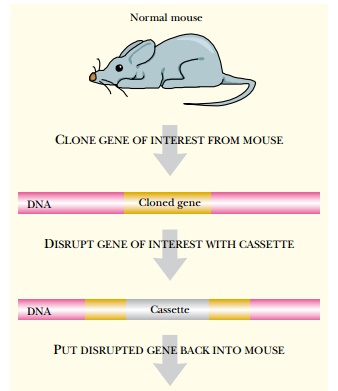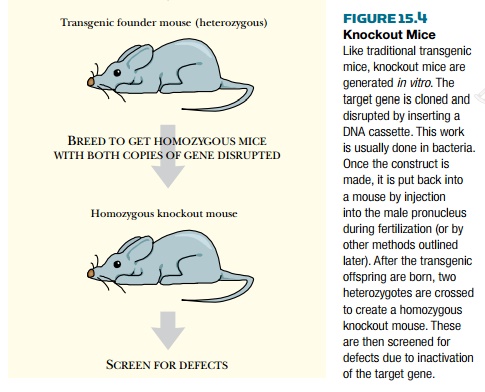Chapter: Biotechnology Applying the Genetic Revolution: Transgenic Animals
Knockout Mice for Medical Research
KNOCKOUT
MICE FOR MEDICAL RESEARCH
Transgenic animals, mostly
mice, are of great value in the genetic analysis of inherited diseases and
cancer. Here we are interested not so much in adding a cloned transgene as in
discovering the function of genes already present. The general approach is to
inactivate, or “knock out,” the gene of interest and then ask what defect this
causes. To achieve this the target gene is first cloned. Then the gene is
disrupted by inserting a DNA cassette into its coding sequence. (Most DNA
cassettes also include an antibiotic resistance gene for easy detection.) The
intruding DNA segment prevents the gene from making the correct protein product
and thus abolishes its function. The inactive copy of the gene is then put back
into the animal by following the procedure outlined earlier for transgene
insertion. The incoming DNA, carrying the disrupted gene, sometimes replaces
the original, functional,copy of the gene by homologous recombination. Founder
mice are obtained that have one copy of the disrupted gene. By breeding them
together, mice with both copies disrupted are obtained. Such mice are known as
knockout mice and will completely lack gene function (Fig. 15.4). If the gene
in question is essential, homozygous knockout mice may not survive, or may live
only a short time.


Related Topics